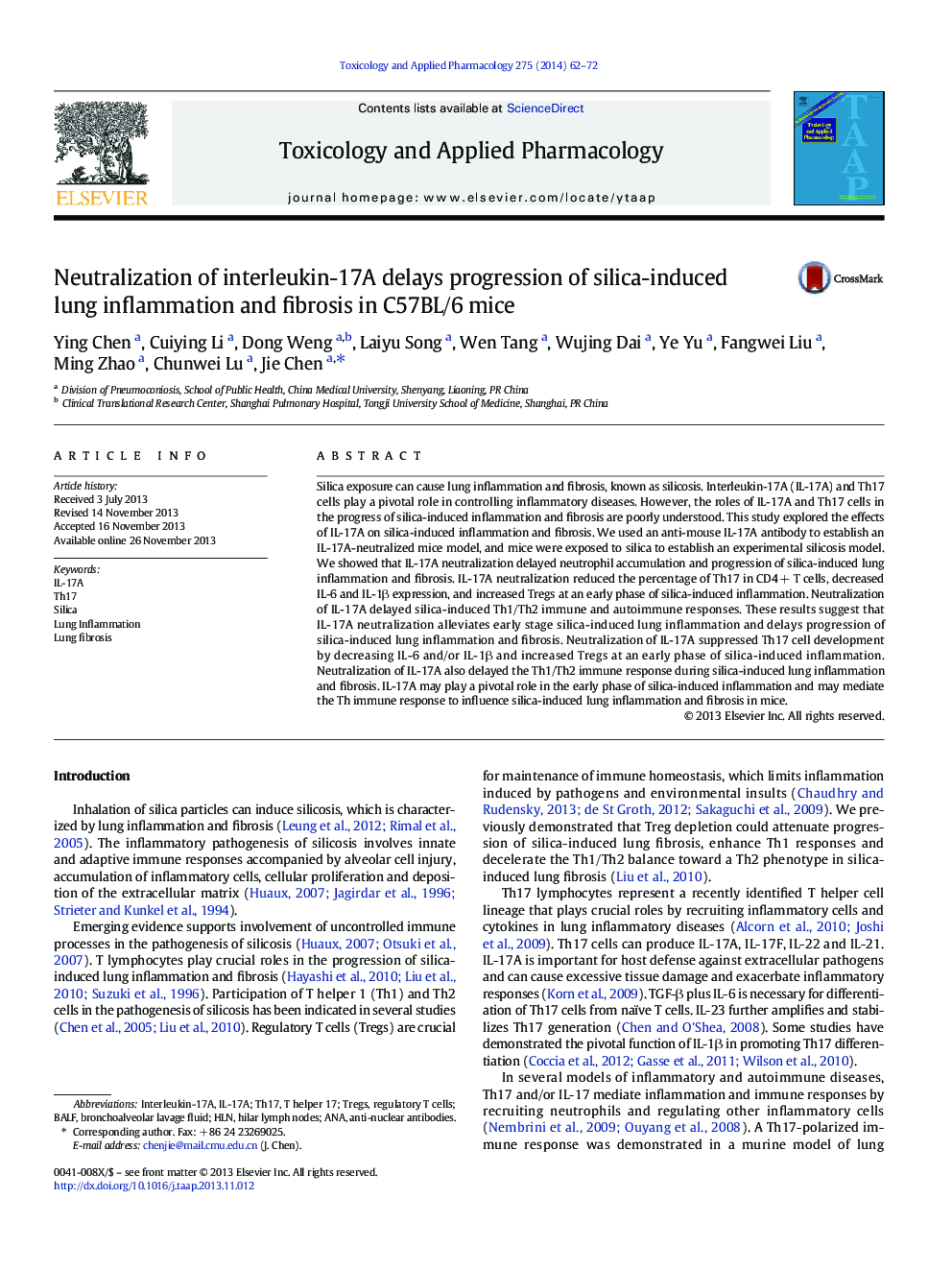| Article ID | Journal | Published Year | Pages | File Type |
|---|---|---|---|---|
| 2568586 | Toxicology and Applied Pharmacology | 2014 | 11 Pages |
Abstract
Silica exposure can cause lung inflammation and fibrosis, known as silicosis. Interleukin-17A (IL-17A) and Th17 cells play a pivotal role in controlling inflammatory diseases. However, the roles of IL-17A and Th17 cells in the progress of silica-induced inflammation and fibrosis are poorly understood. This study explored the effects of IL-17A on silica-induced inflammation and fibrosis. We used an anti-mouse IL-17A antibody to establish an IL-17A-neutralized mice model, and mice were exposed to silica to establish an experimental silicosis model. We showed that IL-17A neutralization delayed neutrophil accumulation and progression of silica-induced lung inflammation and fibrosis. IL-17A neutralization reduced the percentage of Th17 in CD4 + T cells, decreased IL-6 and IL-1β expression, and increased Tregs at an early phase of silica-induced inflammation. Neutralization of IL-17A delayed silica-induced Th1/Th2 immune and autoimmune responses. These results suggest that IL-17A neutralization alleviates early stage silica-induced lung inflammation and delays progression of silica-induced lung inflammation and fibrosis. Neutralization of IL-17A suppressed Th17 cell development by decreasing IL-6 and/or IL-1β and increased Tregs at an early phase of silica-induced inflammation. Neutralization of IL-17A also delayed the Th1/Th2 immune response during silica-induced lung inflammation and fibrosis. IL-17A may play a pivotal role in the early phase of silica-induced inflammation and may mediate the Th immune response to influence silica-induced lung inflammation and fibrosis in mice.
Keywords
Related Topics
Life Sciences
Environmental Science
Health, Toxicology and Mutagenesis
Authors
Ying Chen, Cuiying Li, Dong Weng, Laiyu Song, Wen Tang, Wujing Dai, Ye Yu, Fangwei Liu, Ming Zhao, Chunwei Lu, Jie Chen,
